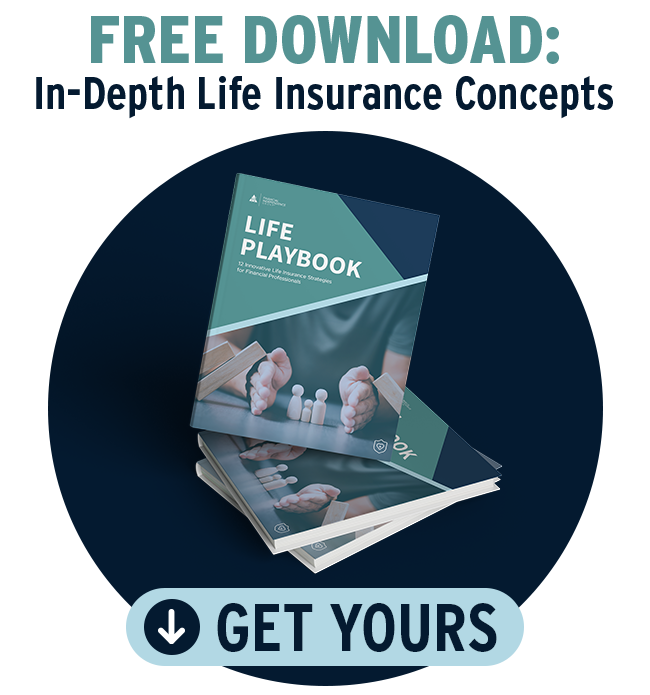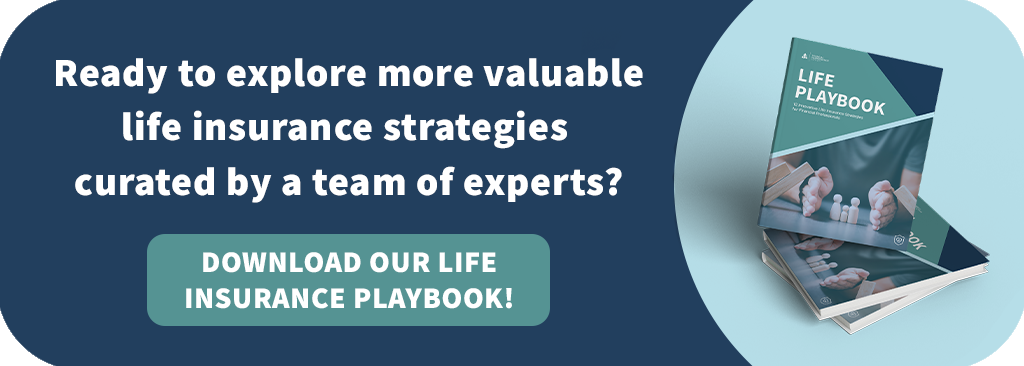Updated August 7, 2024, at 12:53 PM
How do you find the right indexed universal life insurance policy for a client?
Much is said about the indexed universal life insurance policy and its impact and growth over the last several years in the life insurance industry. It’s no wonder that indexed universal life (IUL) policies have represented 24% of overall individual life sales and 65% of total universal life sales.
Many industry experts have weighed in on IUL’s product mechanics, costs, benefits, and features. And although these are very important, we’ll examine a few of the common uses of a maximum-funded (max-funded) IUL policy, while offering some caution in certain circumstances where IULs may not be the most appropriate product choice.
First, let’s define what a “max-funded” IUL is.
IUL is a permanent life insurance policy that builds cash value by crediting interest based on some external index strategy. Because it’s a permanent universal life (UL) policy, there are an infinite amount of ways to fund such a policy.
That is, as defined by the insurance company, a client could pay a minimum premium to cover policy expenses and prevent the policy from lapsing from year to year. Alternatively, he or she could pay a “maximum” premium as allowed by the IRS to take advantage of the favorable tax treatment of permanent life insurance, or anywhere in between. For our purpose, we’ll examine the max-funded scenario.
Related: A Look at IUL Fees, Costs, & Illustration Manipulation
IULs for Income Replacement
Using an oversimplified example, if a client pays $1 and can leverage it to $100 in the event of premature death, and that $100 can be paid income-tax-free to the beneficiary, this can be a good deal from a financial standpoint. The $100 can be used to replace the income lost because of the premature death. An IUL might not be the best fit for income replacement when a client wants to protect his or her family with life insurance without the ability to pay for a max-funded IUL policy.
Income replacement is one of the primary reasons that clients purchase life insurance. Further, there are two core elements of any life insurance policy—including IULs—that make it attractive from an income replacement standpoint: leverage and tax-efficiency.
To adequately fund the IUL, it might require $4 to create $100 of benefit. However, for a term policy, the outlay might be $1. So, if the client is on a tight budget, you might see strong consideration for the term policy instead of the IUL. In either case, there’s still significant leverage and tax benefit.
Retirement Income Supplement
Most financial experts will agree that a predictable stream of income is vital to the success of a client’s finances in retirement. While growth and accumulation are essential during a client’s working years, creating the income they can’t outlive becomes more critical during their retirement years.
An IUL can be a useful product and play an important role in retirement. During a client’s working years, the IUL’s cash value grows and accumulates. Then in retirement, they may be able to take income-tax-free distributions from this policy to supplement other sources of retirement income.
It’s important to consistently monitor the IUL to ensure that it has enough value to continue to support the income being distributed to the client. One idea might be to use this retirement supplement IUL policy as a “backstop” in case their other retirement accounts don’t perform as intended, or if you’re looking to reduce their income tax in a particular year. IULs offer flexibility to take income from the policy on an “as-needed” basis and don’t require a consistent, static amount each month or year.
Because of an IUL’s ability to produce income-tax-free distributions, it might be easy for a client to consider the thought of, “Well, why don’t I put all my money in this IUL?” Though tempting, it’s generally not sound advice to suggest a client put all of their eggs in one basket. Other financial products exist that can be layered in with an IUL to create tax efficiency—and even guarantees—for the client. The scope of this paper won’t cover these other products, however.
Related: IUL vs. Whole Life Insurance: What are the Differences?
IULs: Life Insurance for the Living
Up to this point, we’ve covered two of the most common uses for IULs: income replacement and supplemental retirement income. Living benefit riders or provisions are useful aspects that most IUL policies possess. These give the client the ability to use part or all of the policy death benefit for purposes of a chronic, critical, or terminal illness.
Since an IUL is still a life insurance policy first, these benefits aren’t typically the primary driver of a purchase. However, they give IULs additional flexibility and provide the client with more options to use the policy during his or her lifetime.
Chronic illness benefits, in particular, have become a popular “living” benefit in the industry. This is no surprise since the cost of long-term care (LTC) continues to increase, and the options for insuring against this cost have become limited in the traditional LTC insurance space.
However, buying an IUL solely to mitigate LTC or chronic illness risk would be a misstep. Furthermore, thinking an IUL is the only financial product that a client needs to handle this risk is also a mistake. Certainly, IULs can provide a chronic illness benefit, but it’s generally recommended to consider alternative products as part of an overall strategy to cover the LTC risk—not just IULs.
Other potential uses for a max-funded IUL:
- Income replacement
- Retirement income supplement
- Living benefits
- Estate planning/wealth transfer
- College planning
- Business planning
- Premium financing
Why Max-Funded IULs May Be the Right Fit
What if a financial product existed that provides a leveraged benefit and income tax efficiency in the event of premature death, chronic illness, heart attack, cancer, stroke, or terminal illness? Moreover, what if it could provide income diversification to supplement a retirement plan?
Perhaps it could be part of a client’s plan during their working years and through retirement as well. Max-funded IULs may fit the description of this dynamic product, and they may be instrumental when appropriately positioned.
Finally, it’s not the only tool a financial pro should have in their bag. A max-funded IUL isn’t always the answer, but it has its place in certain client situations.
Keep Reading: Life Insurance as Part of a Retirement Plan
The content within this document is for informational and educational purposes only and does not constitute legal, tax, or investment advice. Customers should consult a legal or tax professional regarding their situation. This document is not an offer to purchase, sell, replace, or exchange any product. Insurance products and any related guarantees are backed by the claims-paying ability of an insurance company. Insurance policy applications are vetted through an underwriting process set forth by the issuing insurance company. Some applications may not be accepted based upon adverse underwriting results.
Some types of permanent insurance may require consistent premium payments, or the policy may risk lapsing. Unpaid policy loans decrease future death benefits paid to beneficiaries. Excessive policy loans may cause the need for future premium payments. If a contract lapses due to excessive policy loans or if a customer chose to surrender their policy, one may be subject to tax payments for policy loans that exceed the premiums paid. Excessive premium payments may cause the policy to become a modified endowment contract. Policies classified as modified endowment contracts may be subject to taxes when a loan or withdrawal is made.



